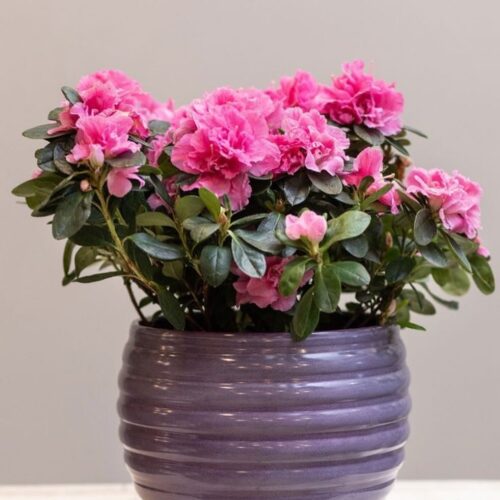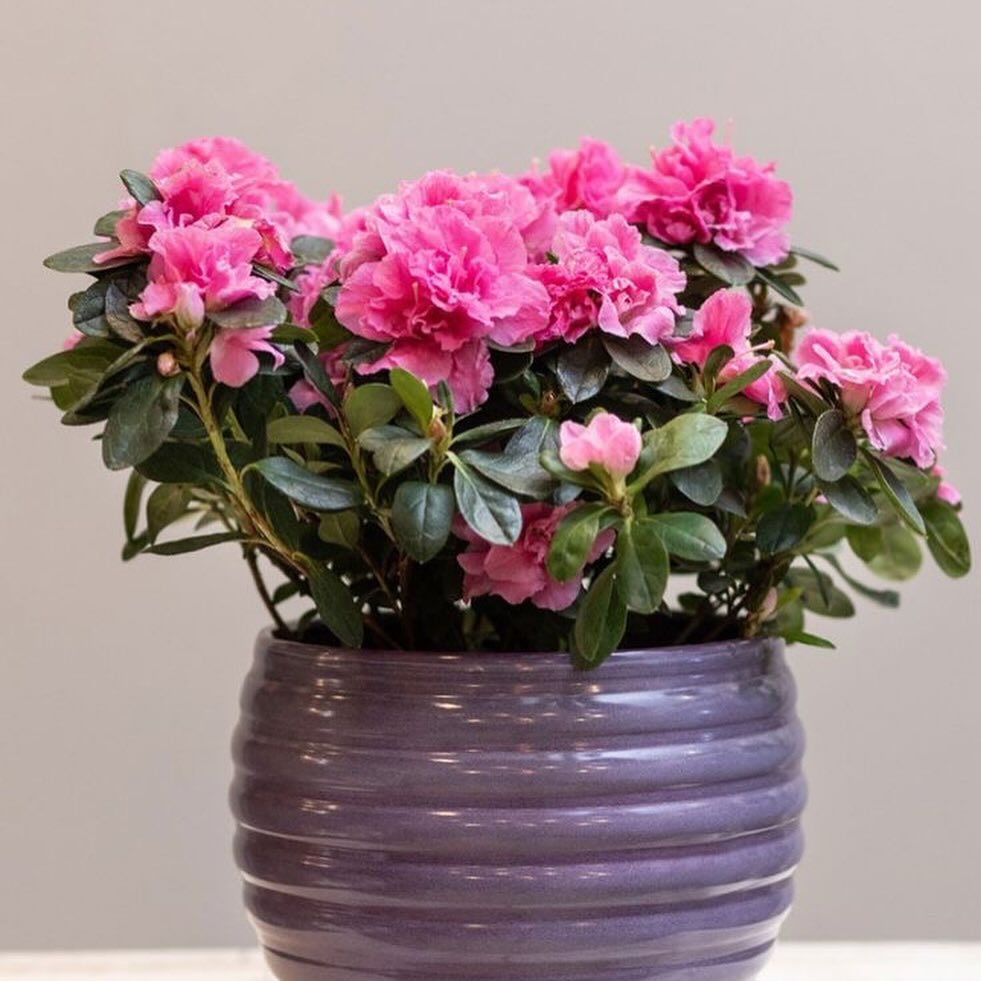Growing Azalea in Pots is fun as it brings a bright splash of blooms to your small gardens, patio, porches, and balconies.
Azaleas are low-maintenance plants that offer beautiful blooms and leaves. Some deciduous varieties display attractive fall colors, whereas evergreen cultivars showcase year-round flair to the garden. Compact azaleas are suitable for container gardening. Do you also want to grow Azalea in Pots? Read this post.
Read: Gardenia Growing and Care in Pots
Growing Azaleas in Containers

Azaleas are classified as ericaceous plants, which implies they flourish in acidic soil with a pH ranging from 5.0 to 6.0. Growing them in pots offers the advantage of easy control over the quality of the growing medium.
Select a potting soil specifically formulated for acid-loving plants, or make your own blend by combining equal parts potting soil and fine pine bark. When selecting a container, ensure it provides sufficient room for root growth, as a small container can restrict growth potential. It’s essential for the container to have at least one drainage hole to prevent soil saturation, which can lead to root rot in azaleas.
Plant the azalea at the same depth it was originally planted in its nursery container, as planting too deeply can promote crown rot. After planting, water deeply and apply a thin layer of mulch over the soil surface to maintain root moisture and temperature regulation.
Propagating Azalea Cuttings
Ensure your containers have sufficient drainage holes. Choose a well-draining rooting medium for propagating azalea cuttings. An effective option is a 50/50 mix of peat and perlite. Moisten the mixture and fill it in the pots. Snip off the cut ends of the azalea stem cuttings below a leaf node. Remove leaves and any flower buds from the bottom third of the cutting. Dip the cut end of each cutting into the rooting hormone. Plant the lower one-third of each cutting into the medium. Water the cuttings gently.
Cut off the top portion of a clear plastic bottle and place it over each azalea cutting to retain moisture. Arrange all containers on a tray and position them in a location with bright, indirect light. Monitor the moisture level of the medium regularly and add water when it becomes dry. Within approximately two months, roots should start to develop on the azalea stem cuttings.
After eight weeks, gently test each cutting by tugging on it to check root growth. If you feel resistance, it indicates that roots have begun to form. Now you can remove the plastic bottle tops. At this stage, gradually introduce the cuttings to a few hours of morning sunlight.
As late summer approaches, separate the rooted plants and transfer each into its individual pot. Keep them in a sheltered area until the following spring, when they can be safely moved outdoors.
Choose the Right Pot
Ensure that the container you select provides ample space for the root ball to prevent growth restriction. Verify that the pot includes adequate drainage holes, as azaleas cannot thrive in soil that becomes waterlogged.
Read: Salsify Care in Pots
Azalea Plant Care in Pots
Location
Azaleas grow well when they receive morning sunlight but are shaded during the afternoon. An ideal spot with partial or dappled sunlight will be perfect. They don’t thrive in full shade or direct, intense sunlight.
Also, temperatures exceeding 85 degrees F (29 C) are unfavorable to the plant. Generally, azaleas perform best in USDA plant hardiness zones 5 through 9. While azaleas are cold-hardy, container-grown specimens are more vulnerable. Take precautions during winter, such as providing protection or bringing them indoors until spring arrives.
Water
Water your azalea in pots whenever the soil surface feels dry to the touch. During hot and dry weather, check your plant daily, as potted azaleas can dry out rapidly. If available, use rainwater as it tends to be less alkaline than tap water.
Fertilizer
Apply fertilizer to your plants every month from spring through late summer. Use a fertilizer specifically designed for acid-loving plants. Alternatively, opt for a slow-release fertilizer and apply it a couple of times throughout the season.
Deadheading
Regularly remove spent flowers from azaleas to maintain their tidy appearance and encourage ongoing blooming.
Pruning
If your azalea appears messy or if you wish to control its size and shape, prune immediately after flowering. Avoid delaying pruning, as doing so close to the blooming period will diminish the number of flowers produced.



